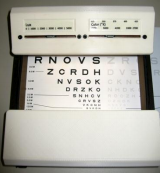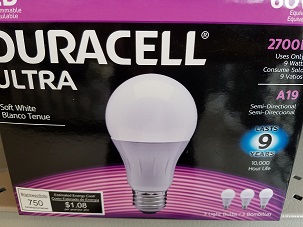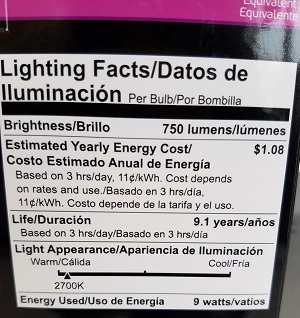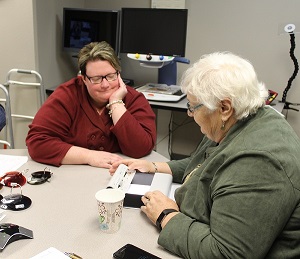Task Lighting is local and close lighting used for longer durations during a specific activity. Some task lighting activities can include writing checks, reading a book, reading the mail, and sewing or needlework. Proper lighting is fundamental to vision especially for low vision users. Good lighting all depends on brightness, contrast and color and will vary person to person. With the right task lighting it can help an individual see details clearer and even reduce the need of magnification.
Last week Assistive partnered with Amy Osvold from the ND Vision Services/School for the Blind to perform a collaborative demonstration using a diagnostic system called the LuxIQ. LuxIQ measures and provides a recommendation for the right task lighting for those with a vision impairment.
Beth and I asked four current Assistive consumers with vision impairment to join us for measuring and prescribing the right task lighting using the LuxIQ.
Lighting Exam Using LuxIQ
Using the LuxIQ, Amy was able to identify each of the four individuals’ optimized task lighting recommendations within 10 minutes. To assess reading performance at various level of illuminance and color temperature the LuxIQ was turned on and placed over different font size print samples.
Next Steps Taken:
- Individual selects the lux intensity preference using slider on the left of the LuxIQ. Lux is the brightness of light needed.
- Color temperature is adjusted using slider on the right of the LuxIQ. The lower the number selected, the warmer the lighting is.
- Amy then recorded the preferred intensity (lux) and color temperature numbers for each individual. The numbers were entered then into a LightChooser web app that converts measurements to recommendations. Example: After measurements from one of the individuals was converted, the recommendation was to use a light bulb with lumens of 800 and a color temperature of 3600K.
There are four things to look for on the bulb box:
– Lumens
– Color Temperature
– E # is the screw type/fitting of bulb, E26 is normal screw
– A # indicates bulb size/length of bulb, regular size is A19
Lights used to be measured in watts. However, watts is not a measurement of brightness but instead it is a measurement of how much energy it takes to run that light bulb.
These recommended bulbs can be found in specialty bulb stores (One Source Lighting or Batteries and Bulbs) who will have the best selection. Discount stores (Walmart or Menards) may or may not carry the specialty bulbs that are recommended.
The best type of lamps to use these bulbs in are ones with a gooseneck lamp to allow the light to be at the optimum focal distance that is usually placed below eye level or 8-12 inches above the task.
The LuxIQ can also be used to assess the maximum use of functional vision for both indoors and outdoors by evaluating a variety of filters. Filter and tint numbers will be determined for what works best for the individual, identifying the optimum color lens for sunglasses.
From our collaborative demonstration with Amy using the LuxIQ, we learned that managing glare and using the right kinds of lighting is a simple thing to change but can make such a big difference!
To learn more about the LuxIQ or to get help with finding the right task lighting, contact Amy Osvold, with ND Vision Services/School for the Blind at 701-857-7635 or email abrunner@nd.gov.




